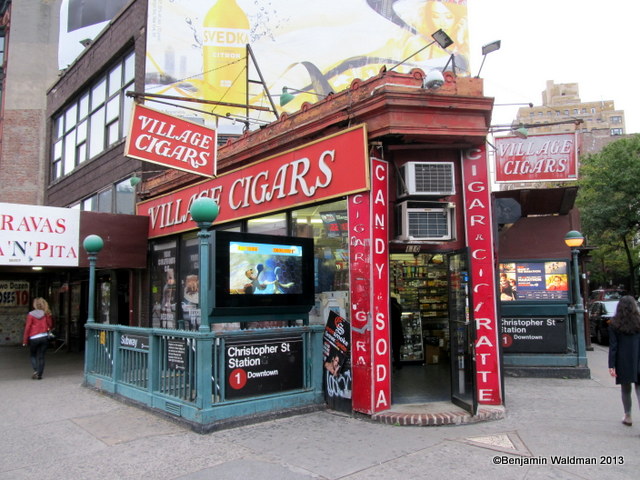The Spite Triangle is my kind of property. To be honest it seems like exactly the kind of thing I would do if faced with the same situation. "What situation is that", you may ask? This is the story of how one of the smallest pieces of private property in the world, came to be.
In the beginning
The city of New York didn't implement a master plan until 1811. Because of this much the first settled areas aren't laid out in the neat and tidy grid pattern that we think of now as being one of Manhattan's characteristic traits. This lead to much of lower Manhattan being a bit of a developmental mess. In the early 1900s there was an initiative to try and reorganize some of these areas. They decided that it was necessary to expand 7th avenue, and therefore an 11 block section of the West Village neighborhood would have to be condemned. The demolishing of these several hundred buildings was started in 1913 and completed in 1916.
 |
A survey from 1897, the building labeled Vorhes was the apartment building of David Hess. This image is from the New York Public Library. Enter, David HessThe Hess family owned a 5 story apartment building called the Vorhes or Voorhis (depending on where you look). It also just so happened that their apartment building was located right in the middle of where the new road expansion would run. As most people would be, the Hess's weren't all too excited that the city was flexing it's eminent domain on their apartment building. Hess fought this decision but ended up losing the fight and his apartment building. When all was cleared the Hess family was somehow left with a small, around 2 foot wide, triangular parcel of land. (It is worth noting that some believe that the parcel was originally around 7.3 feet before it was incorporated, which I will talk about later.) In some reports it is said that the city even asked them to consider donating the parcel, but they had no such plans. In 1922, as a sort of power move, and pinky middle finger to city hall, the mosaic seen above in the picture, was laid. In 1938 the parcel was sold for $100 dollars to the owner of the Village Cigars building, the store that it sits just in front of. An uncertain futureAs of early 2021 the Village Cigars building is up for sale. This is due in part because of the pandemic and the need for Jonathan Posner, the owner of the building to focus on his more profitable properties. Village Cigars is leased so it is not known if they will continue to be the tenants of the building. But the triangle and the cigar shop are very recognizable and beloved West Village landmarks, so it seems to me to be in the best interest of the buyer to preserve the property as it is. Sources Used:I think it is important now, more than ever for articles on the internet to try to as accurate as possible, so I am leaving a list of the sources that helped to make this LorenzoRamble. It was hard because I found several variations in the story and did my best to try and stick with the most consistent information.
TidBit:I think that explains itself. And that about wraps it up. Until next time. |


Nice Lorenzo
ReplyDeleteThis is a fantastic read
ReplyDelete